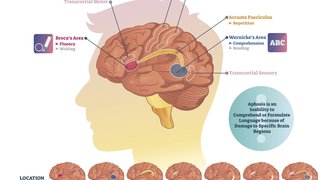
For patients with glioblastoma (GBM) or leptomeningeal disease (LMD), two of the most complex brain cancers, effective treatments remain elusive. Traditional methods such as chemotherapy, radiation therapy, and surgery are often ineffective for brain cancers.
The challenge for decades has been how to properly treat brain cancer while minimizing damage to the brain’s sensitive, life-giving tissues. The blood-brain barrier – the brain’s natural defense system – prevents medications from adequately entering the brain. While aggressive treatment can be used to penetrate this powerful barrier, it can also significantly lower the quality of life for these patients.
A potential solution may lie in the direct delivery of a novel nanoparticle to the brain. This nanoparticle encapsulates a radiopharmaceutical called rhenium (186Re) obisbemeda. This clinical trial is happening at UT Southwestern in the Department of Neurological Surgery and in the Harold C. Simmons Comprehensive Cancer Center.
Nanoparticles have been used to deliver cancer therapies for several years, but the technology historically has been ineffective for GBM and LMD, due to the size and shape of the nanoparticles as well as limitations in the drug delivery catheters. This has hindered the ability to bypass the blood-brain barrier, which blocks intruders such as infections – and, unfortunately, medications – from entering the brain.
Two ongoing clinical trials, ReSPECT-GBM and ReSPECT-LM, are working to address these challenges. Both trials use novel “nanoliposomes,” which are specially designed nanoparticles engineered to circumvent the blood-brain barrier. The ReSPECT-GBM trial also uses an innovative catheter with a tapered, step-down tip that helps to create a pressure gradient that addresses previous technical limitations such as backflow and inadequate dissemination of the drug.
Although these studies are in their early stages, they are already showing promise to help improve longevity and quality of life for patients with complex brain cancers.
The blood-brain barrier and brain cancers
The blood-brain barrier is a network of blood vessels and tissues that help protect the brain from bacteria and viruses that could harm it, while letting water, oxygen, glucose, and other helpful substances in. Unfortunately, sometimes it does its job too well – like blocking medications intended to treat GBMs and LMD.
GBMs are grade 4 tumors that deeply infiltrate the brain and consequently cause neurologic dysfunction. GBMs represent nearly half of all malignant tumors that start in the brain, and more than 12,000 are diagnosed in the U.S. each year. While some GBMs can be removed with surgery, they are not curable – they grow quickly and invade nearby tissues, making recurrence common.
LMD is a rare cancer that develops when cells from breast, lung, or other cancers spread to the lining of the brain, spinal cord, and the cerebrospinal fluid (CSF). LMD makes up 1%-8% of cancer cases, and about 110,000 are diagnosed each year in the U.S. Because LMD is spread through the brain, spinal cord, and spinal fluid, direct surgical removal is not an option. There is no cure for LMD – the goal of treatment is to relieve symptoms and control tumor growth.
Related reading: Vic’s story: Glioblastoma and a ‘Magic Johnson miracle’
About the ReSPECT trials
ReSPECT-GBM: Catheters to bypass the blood-brain barrier
This phase two trial is designed to learn whether catheter-based delivery of nanoparticles containing the radiation therapy medication rhenium (186Re) obisbemeda will shrink a GBM, increase survival, or improve a patient’s quality of life.
In the operating room, while a patient is under anesthesia, the neurosurgeon creates a tiny hole in the skull. Using a precise surgical navigation system, the neurosurgeon guides up to five catheters through the skull and into the tumor for future medication administration.
The following day, the patient gets a direct drug infusion via the catheters. Like a fountain in the center of a pond, the drug springs from the catheter tip and showers an area up to five times the volume of the infusion with nanoparticles that emit the radiation therapy. This delivery strategy is termed convection-enhanced delivery (CED). The medication stays within a few millimeters of the nanoparticle, reducing collateral damage to surrounding healthy tissues while shrinking the tumor.
Participants will receive one dose of the treatment in either an inpatient or outpatient setting and will be monitored throughout the study for up to three years. To be eligible, patients must have no history of taking the medication Avastin (bevacizumab) and be:
- Diagnosed with recurrent GBM.
- 18 years or older.
- Able to tolerate an MRI.
If you are interested in participating, talk with your doctor about the potential benefits and risks of enrolling.
ReSPECT-LM: Treating cancer in the lining of the brain
Many systemic cancers that have spread to the brain can be effectively treated with Gamma Knife stereotactic radiosurgery – but not LMD. Clusters of microscopic cancer cells invade the lining of the brain and its fluid, making them surgically inaccessible. Whole-brain radiation therapy can damage healthy brain tissue and cause functional side effects that compromise quality of life.
The phase one ReSPECT-LM trial is designed to study the safety and optimal dose of a nanoparticle-carried medication delivered via a port in the brain.
In this study, a neurosurgeon creates a dime-size opening in the patient’s skull to implant a port (Ommaya reservoir) under the scalp. The port terminates in the lateral ventricle of the brain – a large, open area where cerebrospinal fluid is produced.
Through the port, nanoparticles containing rhenium (186Re) obisbemeda are injected directly into the CSF as a one-time dose. The medication is distributed by the CSF throughout the brain’s lining and the spinal column, emitting radiation that travels for a short distance to eliminate local cancer cells while sparing healthy tissues.
We’ll watch how the medication flows through your nervous system. You’ll be monitored carefully by a doctor throughout the study for up to one year, with frequent sampling of spinal fluid, specialized imaging, and close monitoring of symptoms through neurologic exams. To be eligible, patients must have no history of whole brain or spinal cord radiation therapy and must be:
- Diagnosed with LMD from solid tumor cancers including breast, lung, melanoma, or gastrointestinal.
- 18 years of age or older.
- Using effective contraception and not pregnant, if female.
Talk with your doctor if you are interested in enrolling.
Innovating to improve and extend life
The ReSPECT-GBM trial has been in progress for several years. Anecdotally, we have seen patients getting nanoparticle-based radiation therapy in this manner live beyond their life expectancy. Formal data analysis from the trial will tell us whether this is coincidental or a benefit of the treatment.
Provided these exciting nanoparticle-based treatments are proved safe and effective, it is anticipated that they will advance to phase three clinical trials in the coming years.
When I (Dr. Patel) was in residency (2006-2013), we had to create custom catheters in the lab to perform these procedures. Now, just a decade later, we’re helping to bring surgical and medical advancements for brain cancer full circle. It’s very exciting and, most importantly, this research could lead to significant and positive shifts in GBM and LMD outcomes – giving hope to patients and families living with these complex brain cancers.
To talk with a brain cancer expert, call 214-645-8300 or request an appointment online.
Take a behind-the-scenes look at how discoveries become life-saving treatments at UT Southwestern Medical Center.












